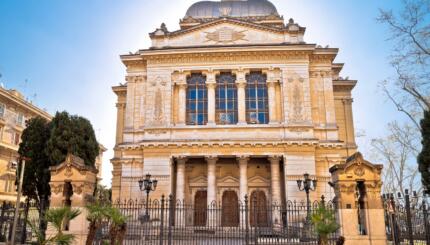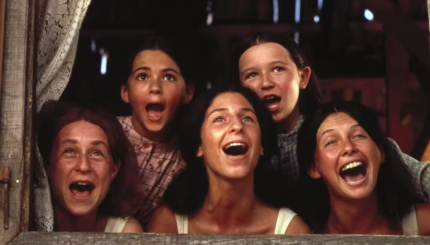The 2001 American Jewish Identity Survey (Egon Mayer, Barry Kosmin and Ariela Keysar) reports that a full 48% of American Jews do not belong to a synagogue. When asked what their religious outlook is, 35% identified as secular and 15% as somewhat secular.
Reflecting on the findings, Felix Posen, Vice Chairman of the International Federation of Secular Humanist Jews, says, “Secularism is a serious conviction for some Jews, as well as an existential condition for a great many more… whatever its functions, secular Judaism must be appreciated and supported as a potent source of identification and motivation; it must be utilized by the organized Jewish community for all the opportunities it affords.”
Jewish Culture as a Gateway
Gary Tobin takes a more expansive position. The head of the San Francisco-based Institute for Jewish and Community Research, Tobin studied Jewish culture in the Bay Area in an effort to determine what role it plays in the identity of local Jews. Published in 2002, A Study of Jewish Culture in the Bay Area proposed “a definition of Jewish culture elastic enough to encompass customs, daily rituals, and popular culture as well as intellectual life, historical preservation, the visual and performing arts.”
The conclusion? Participation in Jewish culture is more wide-spread than any other form of participation in Jewish life in the Bay Area. In addition, it found that for some Jews, culture–including film festivals, klezmer concerts, and fiction–is their sole form of identification.
Tobin contends that the significance of Jewish art and culture as an expression of Jewish identity has largely been ignored. Culture is “a legitimate form of Jewishness” and “the path to community leads through cultural institutions as well as religious ones,” he says.
According to the study, over 90% of Jews in the Bay Area participate in some form of Jewish cultural activities, with film, music and lectures ranking highest on the list. In addition, 90% of respondents were interested in attending more Jewish cultural programs–specifically, film, art exhibits, and theater.
“The dichotomy between religion and culture doesn’t really exist,” Tobin says. “Every religious attribute is filled with culture; every cultural act filled with religiosity. Synagogues themselves are great centers of Jewish culture. After all, what is life really about? Food, relationships, enrichment… So is Jewish life. So many of our traditions inherently contain aspects of culture. Look at the Passover seder–it’s essentially great theater. Jewish education and religiosity bereft of culture is not as interesting.”
To those who would question the findings’ applicability, arguing that the Bay Area study is local in scope and that its respondents are primarily Reform or unaffiliated, Tobin says that “they should pay attention to what’s happening in the Bay Area, as do scholars, politicians, and economists. Trends go east.”
And also west. In a June 2000 report to UJA Federation of New York’s Commission on Jewish Identity and Renewal, a moving picture was presented by social psychologist Bethamie Horowitz, entitled Connections and Journeys: Assessing Critical Opportunities for Enhancing Jewish Identity, of how being Jewish evolved over the course of the lifetimes of New York-area Jews. A pattern of Jewish engagement emerged which is “perhaps the most distinctly American” and in which Jewishness is described “as a set of values and historical people-consciousness rather than as a mode of observance.”
Engaging the Next Generation of Jews
The evidence is that Jewish cultural identity does not lead to assimilation or “bagels and lox” type of Jews. “While we assimilate American culture, America is assimilating Jewish culture,” Tobin contends. “McDonald’s serves ham and cheese on bagels… Jewish culture enriches the cultural fabric of America. A great deal of Jewish culture takes place in non-Jewish venues. If there’s a Holocaust movie at a theater, it becomes a sacred space.”
Roger Bennett, vice president for strategic initiatives at the Andrea and Charles Bronfman Philanthropies, says, “We have a lot to learn about the use of culture as a means to an end, especially in terms of engaging the next generation of Jews. Outside of the Jewish community one can witness the success of the Tibetan Freedom concert, the Christian Rock Music Industry, or the Vagina Monologues to see how cultural mechanisms can be a powerful tool to communicate values, set agendas and organize constituencies.”
“I’d like to see the consciousness of communal organizations expand to include culture,” Tobin says. “I suspect that in 20 years, Jewish culture’s rightful place will be more recognizable.”
Tobin’s comments echo those of Egon Mayer who, in a 1992 panel discussion organized by the National Foundation for Jewish Culture at the General Assembly of Council of Jewish Federations, suggests that the path to Jewish identity and continuity lays through a “fourth door, the general culture that is not specifically religious, that is not specifically directive and instructional, and that is not necessarily geared to defending ourselves or raising more dollars.”
Perhaps the fourth door is better described as a Golden Gate…
Reprinted with permission of the National Foundation for Jewish Culture.


